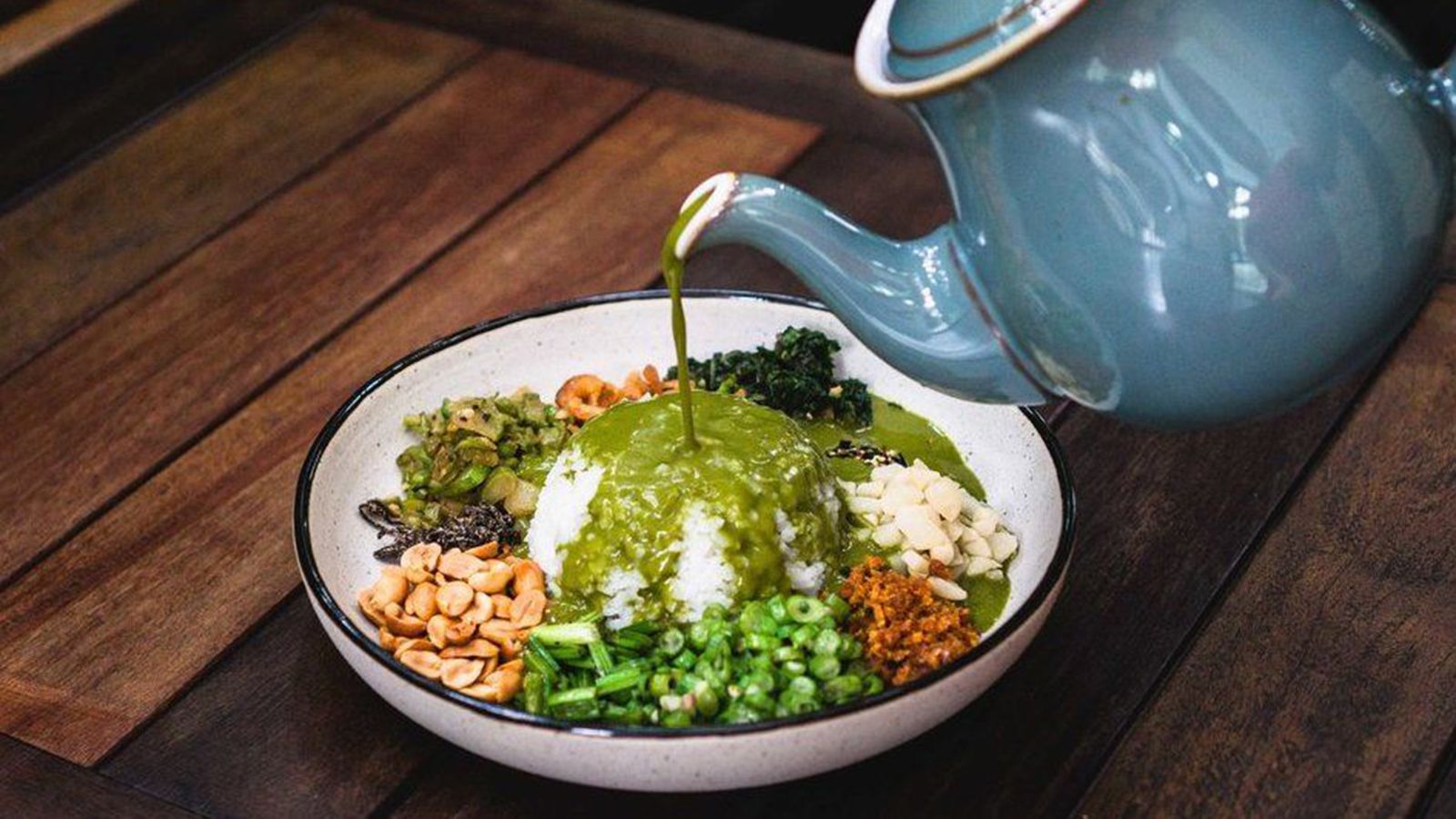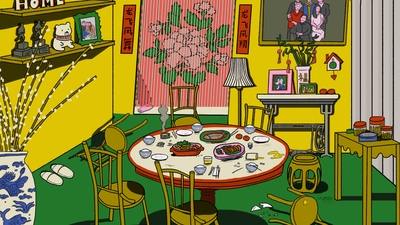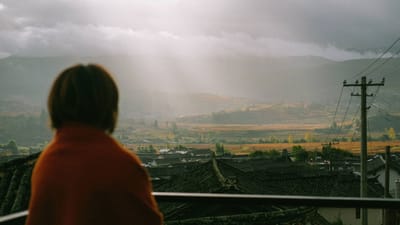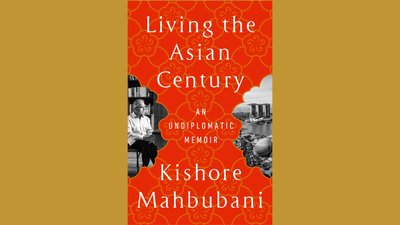Vegetarians have long had slim pickings in Singapore. This is partly because many South-east Asian chefs have relied on animal products, such as dried fish or bits of lard, to add depth to “vegetable” dishes. A pure, meat-free meal has often meant either Indian vegetarian or Chinese imitation meat. Yet over the past two decades lei cha, also called “thunder tea” rice, has risen rapidly in popularity here; it’s that rare, one-dish meal that can be tweaked to appeal to vegans and omnivores alike.
Lei cha, in its most basic form, consists of a carb base (usually white or brown rice), five to seven different types of finely cut vegetables, various toppings like chye poh (preserved radish), tofu or peanuts, and most importantly, a tea-based soup made from a combination of herbs like basil leaves, mint, coriander, mugwort and green tea leaves as well as ground nuts. Pour, mix, eat.
Its two millenia history also speaks to the rich, migratory culture of so many communities that now call Singapore home. Legend has it that General Zhang Fei was preparing an attack on Chengdu during the Three Kingdoms era (220 to 280 AD) when his troops mysteriously fell ill. A physician prescribed the soldiers a combination of herbs and rice, miraculously curing them, and helping them conquer Chengdu. Thus was born lei cha, nutritional ration of heroes.
Lei cha illustrates some of the defining characteristics of the Hakka people or ke jia ren (guest people). As refugees who had to flee from Northern China due to social unrest during the Qin dynasty (221 to 206 BC), many Hakkas lived in the mountains of Southern China. Some eventually migrated to countries as far away as South-east Asia, India and Mauritius. The nomadic Hakkas rarely had access to fresh produce, like seafood and meats. They had to make do with ingredients with a long shelf life, like pickled vegetables and salted dried fish. Through their migration, the “guest people” helped spread foods across the mainland: mui choy, a pickled vegetable whose acid cuts the unctuous goodness of braised pork belly, is a northern preparation that the Hakkas took to the south.
The flexibility of lei cha—no fixed recipe, no must-have ingredients—reflects the adaptability of Hakka people and their ability to 就地取材, or draw on whatever local resources are available. At (now closed) Thunder Tree, run by a brother-sister team, customers could substitute rice for kolo mee (thin, springy noodles). The brothers at Ah Lock & Co. add their grandmother’s Hakka-style yong tau foo (tofu filled with ground meat mixture or fish paste) into the mix. Vegan cafes like Sunnychoice replace dried shrimp and ikan bilis (dried anchovies) with mushrooms, which contribute a similar umami flavour.
Home chefs also inherit variations of the recipe for the herbal concoction: moderating mint, omitting coriander, adding ginger. Thunder Tree used spring water to steep the tea used for the broth, which consists of at least 10 different ingredients. “With the changing weather, the taste profile of each herb will vary slightly or drastically, thus we need to adjust the proportion accordingly,” said Chai Sheau Shi of Thunder Tree.
Lei cha is an example not just of communal dining but cooking too. Traditionally, the tedious task of preparing different vegetables and hand grinding tea leaves using a mortar and pestle was shared among friends, family and neighbours. “It is a dish that is so close to the heart and a dish that unites extended families and friends on all occasions,” said Sheau Shi.
The hand grinding also gave the dish its nickname—the Hakka word for grind (擂) is a homonym for the Mandarin word for thunder (雷), hence the direct translation “thunder tea” rice. Contrary to popular belief, the “thunder” doesn’t refer to the sound of pounding the tea leaves, as one typically uses the pestle in a circular (and silent) grinding motion.
Thunder Tree assembled its lei cha using vegetables grown on the Chai family’s Fireflies Health Farm in Lim Chu Kang. It offered Singaporeans a farm-to-table experience uncommon in a city with no obvious hinterland. It not only captured the dish’s immense history and flavour, but did so while preserving a direct connection to the farmland and to the people whose labour was responsible for the bright, sumptuous melange that fed hundreds of Singaporeans every day.
Now that they’ve been evicted from the farm (see Jom’s photo essay), fans in Singapore can only wonder about the next iteration of a dish that has travelled across continents, and outlasted empires.
Jean Hew is Jom's head of research. Sudhir Vadaketh is Jom's editor-in-chief.
If you enjoy Jom’s work, do get a paid subscription today to support independent journalism in Singapore.







